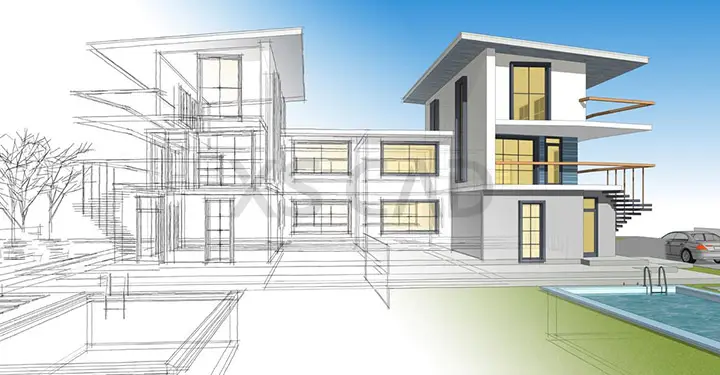Our Articles

The Evolution of Residential Architectural Rendering
Homes, like many dreams, leave a visual impression in the minds of a home buyer, and as such, designers need to accurately represent that visualisation. In the current scenario, this need has given rise to the creation of residential architectural renderings. These rendered images are considerably accurate and can be highly detailed, almost indistinguishable from photographs, and their photorealistic quality may require the expertise of experienced 3D architectural rendering service providers.
Architectural rendering, architectural illustration or architectural visualisation involves creating 2D or 3D images or animations showing an architectural design and its main features. Computer-generated renderings are created using specialised 3D modelling software and render farms. These models and renderings are generated with varying levels of detail for design analysis, as part of presentations or for sales and marketing purposes. They include:
There are different types of rendered images which show the exterior of a building, parts of its interior or aerial views, such as:
Homebuilders can use these realistic homebuilder 3D rendered images in real estate marketing and sales and to help make design decisions.
Just how did rendering evolve from its simple origins?
Though advances in residential architectural rendering have leapfrogged to where we are now, there were a few noteworthy catalysts along the way. Architectural visualisation has been significantly impacted by a few developments over the years, such as:
Client needs, desires and choices, much the same as the methods and means of residential architectural rendering, are constantly changing. Rendering professionals and technology must adapt. By creating 3D rendered interior design, clients can more comprehensively understand project details and reduce misunderstandings. Rendering helps customise and fine-tune the design.
Rendered images help clients:
A series of rendered images can help guide clients through the design on a virtual tour, impressing clients and helping drive sales through marketing avenues. Computer-generated rendered images can be created faster, more efficiently, in greater detail and at a more competitive cost than the traditional method.
Creating rendered images eases communication, cooperation and commitment between clients and designers. There are too many good reasons for designers not to invest in creating photorealistic residential architectural renderings. If this is a daunting prospect due to lack of training, expertise, infrastructure or time, an increasingly viable solution lies in enlisting offshore assistance. Trusted offshore partners can deliver high-quality 3D architectural visualisation services, including 3D architectural rendering services, on time and within budget. It’s come a long way, but homebuilder 3D rendered images are here to stay.
XS CAD has valuable experience as a 3D architectural rendering service provider, delivering BIM modelling services, 3D architectural visualisation services and homebuilder 3D rendered images for global housing firms. Our range of services for architectural and homebuilding across the world include 2D architectural drafting, 3D modelling services and other 3D rendering services.

